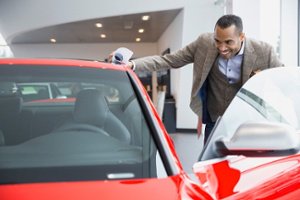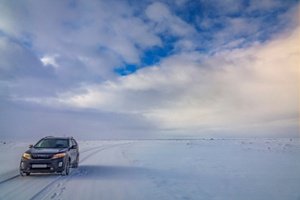
by Flagship Staff | Mar 19, 2019 | Blog
If you have pets in your household, you understand the benefits they bring to your family. Their inquisitiveness, unconditional love, and playfulness make every day different. You just never know what they’ll do next to put a smile on your face.
March is pet poison prevention awareness month. This is a great opportunity if you’re a new or a veteran pet owner to learn or be reminded about the different items around your home that can be dangerous to your furry friend. Or, if you’re traveling on spring break this year, please make sure your pet sitter is aware of dangerous items as well.
As the owner of an orange tabby cat named Toulouse, I’m always amazed and what he finds on the floors around our home. If anyone has something that he’s interested in, we can’t turn our backs on him for one second. If we do, he’s on it.
Here are some things around your house that can be dangerous and lead to potentially life-threatening situations.
Household chemicals. With more daylight already here and the transition to warmer temperatures around the corner, you may find the urge to do some spring cleaning or projects around your home. If so, remember to keep these household items away from your pet:
Toilet bowl cleaner
Drain cleaner
Paint
Paint thinner
Pool chemicals
Antifreeze
Food. We’re very strict with Toulouse’s food. He only gets dry pet food and some cat treats daily. While you may think it’s nice to broaden your pets’ horizons with human food, there are some foods that are very toxic. Some examples include:
Chocolate
Xylitol (sugar-free sweetener found in gum)
Coffee grounds
Alcohol
Meat
Nuts
Onion and garlic
Dairy products
Baby food
Grapes and raisins
Medications. Have you ever set down your medication while getting a glass of water and then got distracted by something else? If you have, you understand the sudden panic that sets in when you realize what you did. While some human medications may be ok as prescribed by veterinarians, make sure to keep medications in a secure place. Never leave medication on the counter in a bottle or plastic bag. If your pet sets his mind to it, he will get the package open. Medications include:
Pain relievers
Antidepressants
Blood pressure medications
Vitamins
Joint supplements
Plants and flowers. Plants and flowers are a nice and affordable way to add some color and beauty to your home. However, depending on the type, they can be very poisonous. Here are a few that should be kept away from your pets:
Azaleas
Daffodils
Lilies
Outdoor items. As you work to get your lawn, flower beds, and gardens ready to grow, don’t forget to use caution with fertilizer. If you spill some, clean it up immediately. Keep fertilizer in a closed, locked cabinet if you have children or pets. Additional dangerous items include rodenticides and insecticides.

by Flagship Staff | Mar 12, 2019 | Blog
Power strips and surge protectors are a necessity in many homes today. With smartphones, tablets, streaming media devices, and gaming consoles, we have a lot of toys to plug in. Don’t forget about TVs, lamps, and other household items. All these items plugged into a power strip can put stress on it.
Most people probably don’t give much thought to how many devices are plugged in at any given time. Did you know that approximately 4,600 home fires start as a result of extension cord and power strip overuse each year? These fires account for 70 deaths and 230 injuries.
Before I share some safety tips, I’d like to explain the difference between each. While this may seem like common sense, it’s important to understand they’re slightly different.
Have you ever gone to the store wanting to buy a surge protector and when you got home your realized you bought a simple power strip? This happened to me with the mass confusion while trying to set up my daughter’s dorm room.
A power strip and surge protector power strip look pretty much the same. They’re both skinny, rectangular, plastic boxes with multiple outlets for you to plug in multiple devices. However, surge protectors:
May be a bit more expensive;
May have additional lights near the power button which light up when plugged in; and
Contain internal components which can prevent spikes and surges in power from destroying your devices.
If ordering online or buying at your local hardware store, always read the product description to make sure you’re buying the right one. Personally, I’d recommend buying a surge protector for all your household needs. This way you’re not left guessing if your devices, TVs, computers, etc. are protected.
One common misconception that I had is that surge protectors provide protection against lightning strikes. I’ve learned lightning strikes are simply too powerful. Surge protectors provide protection from current fluctuations that travel down your power line.
Here are some things you can do to keep your home and family safe.
Never use power strips or surge protectors for high-power capacity items such as, space heaters, dehumidifiers, or other high capacity appliances. Plug them directly into a wall outlet.
Don’t connect multiple power strips together to increase the number of outlets available. However, you can temporarily plug an extension cord into a power strip.
If you’re using power strips or extension cords in multiple places in your home, consider hiring an electrician to install more outlets. This is a safer alternative because the wires in your wall are of higher quality. Multiple extension cords or power strips was always my dad’s pet peeve back in the day when he was an electrician.
Never use power strips or extension cords in a bathroom or on the kitchen counter top.
Do the math. Try to determine what the power strip can handle by looking at its specifications on the package. The most important number is watts. The higher the number, the better. Add up the number of watts used by the devices you’re plugging in. This number should not exceed the total number of watts specified on the package. If buying a surge protector, look at the suppressed voltage rating as well. A lower number will provide better protection against surges. If you’re like me and don’t like math, talk to someone at the store that understands them.
Don’t just look at price. Make sure you’re buying the correct one for your household needs and that it’s certified.
Never try to prevent trip and fall hazards by covering cords up with a rug. Repeatedly stepping on them can cause cords to breakdown, which could lead to a fire.
Here are some ways to prevent or tell if your power strip is overloaded.
Surge protectors are great because they provide several outlets. However, depending on what you’re plugging in, not everyone should be used. Most things we plug in such as a phone, computer, or gaming console don’t use much power. Items found in your kitchen such as a toaster, crockpot, or skillet would draw more power and could potentially cause issues.
If the power strip or surge protectors feels hot, this is a good sign that you have too many things plugged in.
Watch for burn marks or melted plastic.
Before plugging in your next electronic device, look at what’s going on with your power strip or surge protector.

by Flagship Staff | Mar 5, 2019 | Blog
Buying a new vehicle can be very exciting. I remember purchasing my first brand new vehicle. Ahh, that new car smell.
Today the average new car costs about $36,000. According to a recent Edmunds.com report, the average car loan is 69.2 months. That’s almost six years. Data also suggests that 84-month loans have increased significantly over the last several years.
Unfortunately, bigger and longer-term loans don’t have an impact on vehicle depreciation. Carfax.com showed the current depreciation value of new vehicles might drop by more than 20% in the first 12 months of ownership. Trusted Choice indicates some vehicles could depreciate as much as 30% the first year; 11% of that occurs the moment you drive off the lot.
Depreciation can be a major factor if a vehicle is totaled after an accident. And it could leave you stuck with a loan for a vehicle you can no longer drive. This is because most auto policies have “Actual Cash Value” (ACV) coverage. For instance, let’s say that a $36,000 car depreciates 11% the moment you drive off the lot. Now it’s worth only $32,040. If your car is totaled in a loss, insurance will only cover the actual cash value, or $32,040. But if your loan is still $36,000, you’ll have to pay the difference of $3,960 out of your own pocket.
Naturally, people aren’t happy in situations like these; many don’t realize how quickly vehicles depreciate. Fortunately, there’s a way to remedy this situation.
West Bend’s Home and Highway® policy offers “Auto Loan Lease” coverage to fill that gap, as do many dealerships. This is a great product to purchase, especially if you don’t have a big down payment on the new purchase. In addition, companies offer a time threshold in which to purchase this coverage. So, the next time you buy a vehicle and need a loan to do it, think about purchasing Auto Loan Lease or gap coverage. It could be one of the best insurance investments you make.

by Flagship Staff | Feb 26, 2019 | Blog
Just when you think you’ve seen your last snowfall or cold spell, Mother Nature plays another trick on you. Winter weather can make it difficult for our cars to run efficiently or even run at all.
I’ve had my fair share of car repairs over the last several months. While I like my auto repair garage, I’ve seen it enough. On my last visit, Jeff told me that winter weather does crazy things. Things that never leaked before, might start. Batteries, alternators, and other components work very hard during winter months and take on significant wear and tear.
Here are some things to watch on your car.
1. Battery and alternator. It’s common knowledge that it takes a good battery to start your car during the winter months. However, what many people don’t know is that the alternator plays a key role in maintaining proper battery health. The alternator is like a mini generator. The purpose of it is to recharge your battery after each start of your car. On a regular winter day, your alternator may need up to 20 minutes of drive time to recharge it. But on an extremely cold day, it may need even more time.
Recently, I had my daughter Hannah’s car towed because she was stranded on a Saturday night. Thank goodness I purchased roadside assistance through my West Bend policy. It made the situation less stressful.
Unfortunately, I didn’t know the warning signs for a bad alternator. While Hannah told me what she was seeing on her dashboard, I didn’t think much about it. Here are some warning signs:
Battery image. If you see a battery image on your dashboard, this doesn’t mean you have a battery problem. It’s an alternator problem. Depending on the severity of the problem, the light may flicker on and off. Consider shutting down some systems in your car that may not be necessary, such as heated seats. When this light comes on and stays on, it means it’s having a tough time meeting your vehicles electrical needs.
Dim or flickering lights. Because the alternator can’t keep up with your car’s electrical needs you may see dim or flickering headlights. You may also see multiple dash lights flickering on and off. Hannah told me her dashboard was going crazy. She said, “Dad, my dash is lit up like a Christmas tree.” After she told me this, I gave her the worst advice ever, which was turn off the car to see if it resets. The car was dead.
If you have a fairly new battery and suddenly it’s dead, you may have an alternator problem.
Weird sounds coming from under the hood. A growling or whining sound may indicate there is a problem. I did hear a whining sound, but I just attributed it to the fact it was 50 degrees below zero with the windchill.
2. Tires and other components. Unfortunately, it’s tough for road crews to keep up on repairing potholes. It seems like they pop out of nowhere. Unsuspectingly hitting a pot hole can be scary and expensive. If you’ve recently hit a pothole, here are some things to watch for:
Tire puncture;
Bent rims;
Suspension damage;
Steering out of alignment; and
Exhaust system damage.
For tips on how to avoid potholes, check out my blog, “Watch out for that pothole! 5 tips to avoid them.”
Please note that cold air can cause tires to lose tire pressure. It’s dangerous to drive with under-inflated tires. Under-inflated tires can lead to tire failure, poor handling, and buying tires more frequently. Consider checking your tires on a regular basis with a tire gauge or keep an eye on your car’s monitoring system.
3. Fluids. Fluids such as oil and antifreeze are critical for our cars. As temperatures drop, fluids thicken making it difficult for your car to run efficiently. Mysterious leaks due to cold weather can cause a critical failure to an important component of your car. If you find fluid on your garage floor, pay attention to what color it is.
Red – transmission or power steering fluid
Green – antifreeze
Blue – windshield washer fluid
Brown – motor oil or brake fluid
Based on the make and model of your car, colors may vary.
4. Windshield Wipers. Windshield wipers are a crucial component on your car. Especially during the winter months when experiencing snow, sleet, freezing rain, and rain. Cold weather can cause the rubber to become brittle and tear or crack.
When cleaning your windshield, use caution when scraping and cleaning around them. If your wipers are stuck to the windshield, consider turning your defrost on to loosen the ice and snow. A torn wiper blade can make for a miserable commute.
Lastly, consider changing windshield wipers every 6-12 months. I recently bought a pair for my daughter’s car from an auto parts store and they installed them for me.
To learn more about the different types of windshield wipers, check out my blog, “No more mistakes when replacing windshield wipers.”
5. LCD screens. If your car is equipped with an LCD screen for the infotainment system cold weather can cause it to run slow or not appear at all. This recently happened to my daughter’s car. Unfortunately, there’s nothing you can do other than let your car warm up. I must admit, it’s difficult to turn on the heat when nothing appears on the screen.
6. Paint. Road salt does a great job keeping our roadways clear and safe for drivers. However, it can be very damaging to your car’s paint and underlying metal components. Certain types of salt can cause paint to chip. Salt can attack dents and dings and cause exposed metal to rust more quickly. Depending on our weather, my wife and I try to wash our cars on a weekly basis. We have an affordable car wash that does a good job cleaning our cars. The other benefit of washing your car regularly is it keeps the salt residue off your jacket and pants.

by Flagship Staff | Feb 19, 2019 | Blog
With several weeks of winter left, and then the transition to spring, salt could still play a big part in keeping your property safe. Part of being prepared is knowing the specifics of the deicers you’re using on your driveway or sidewalk. Each type of deicer has different melting properties and uses. Consider all factors when choosing the product best for you.
The most common types of ice melts on the market today are chloride based.
Sodium chloride, most commonly known as rock salt, is the most frequently used type of salt, probably because of how inexpensive it is. Working in temperatures as low as 20 degrees, this isn’t the most effective and it’s known to leave a white power behind.
Calcium chloride is probably the most effective salt-based product, because it works up to -25 degrees. Be careful when using calcium chloride. It’s known to cause harm to plants and grass and sometimes it even damages concrete if used excessively.
Potassium chloride has been deemed as the safer chloride-based option, working in temperatures as low as 12 degrees. It doesn’t work as well as other melting products, but people pick this product because it doesn’t harm vegetation.
Looking for products that aren’t chloride based?
Sodium acetate works well in colder temperatures, as low as zero degrees. Its most common use is on airplane runways.
Calcium magnesium acetate works in colder temperatures as well. Along with sodium acetate, this product is considered environmentally friendly and has a lesser chance of harming animals or vegetation.
Ethylene glycol works in extreme cold, up to -58 degrees. However, this product is incredibly harmful for people and animals. Use extreme caution with this product, it can be deadly if ingested.
A huge concern when picking salt is knowing what is and isn’t safe for children and pets.
There really isn’t a fully “safe” salt choice; all salts are harmful if ingested and can cause skin irritation. Even if not ingested directly, there are other ways salt can be ingested. Remember as you’re spreading salt out, you may also be getting it in nearby snow which your children or pets may decide to eat.
Many salts say they’re “pet friendly,” but that isn’t always the case. It’s extremely important to look at labels when selecting salt – try and find a product that doesn’t have any warning labels on it. If something isn’t safe for humans, it isn’t safe for pets either. Propylene Glycol based products are generally the safest product to have around pets.
If you’re concerned about your children or pets, look for products that don’t contain salt or chloride. These are less harmful.
Try mixing salt with some sand to decrease the amount of salt you’re using this winter. Although sand won’t melt ice like salt does, the combination will help increase traction.
As always, it’s important to read warning labels and follow manufacturer directions when using these products. When picking a deicer, take all factors into consideration and pick the product best for you and your family. There’s no such thing as being too safe, always wash your hands after using deicers and keep a close eye on children and pets.





